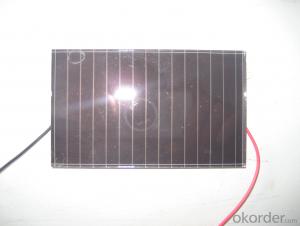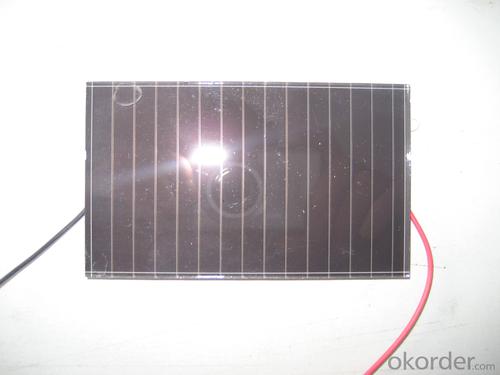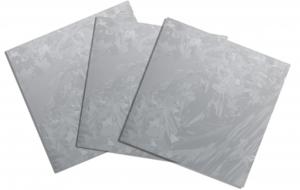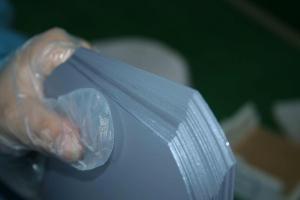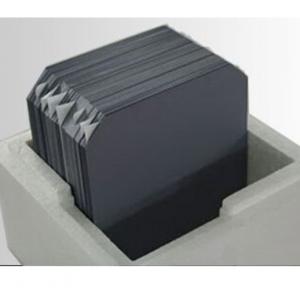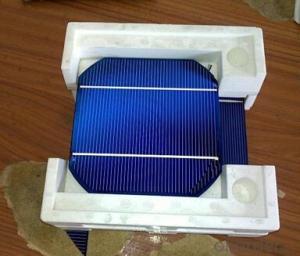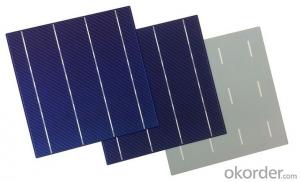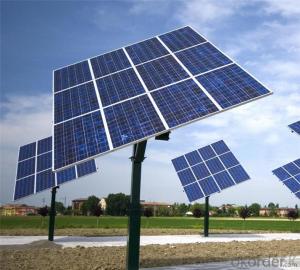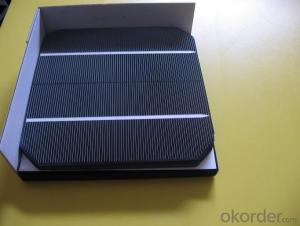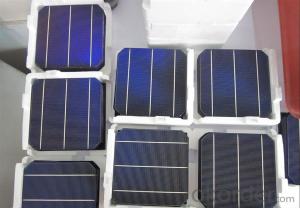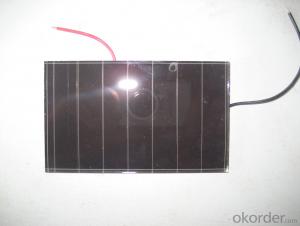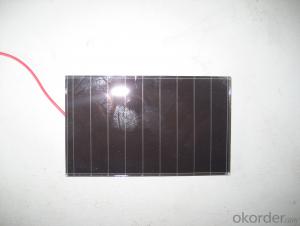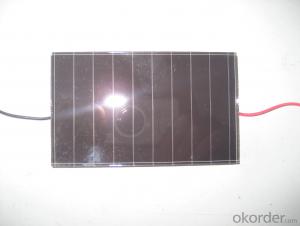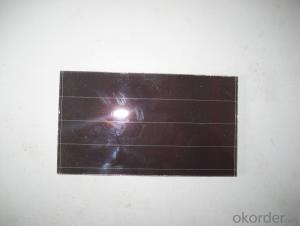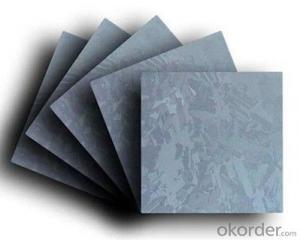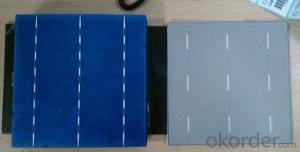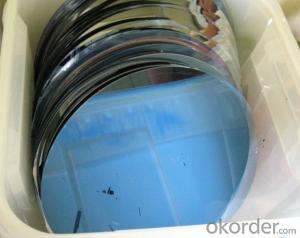Solar Grade Silicon Wafer Amorphous Silicon Dice Specification 6
- Loading Port:
- China Main Port
- Payment Terms:
- TT OR LC
- Min Order Qty:
- -
- Supply Capability:
- -
OKorder Service Pledge
OKorder Financial Service
You Might Also Like
Pv modules at present, the mainstream products are still in silicon as the main raw materials, only in terms of silicon raw material consumption, production 1 mw of crystalline silicon solar cell, need 10 to 12 tons of high purity silicon, but if use the same silicon materials used to produce thin film amorphous silicon solar cell can produce more than 200 mw.
From the perspective of energy consumption, amorphous silicon solar battery only 1-1.5 years of energy recovery period, more embodies its contribution to energy saving in the manufacturing process.
Component occupies a high proportion of costs in a photovoltaic system, the component prices directly affect the system cost, and thus affect the cost of photovoltaic power generation. Calculated at the current price of components, the same money, buy amorphous silicon products, you can get more close to 30% of the power components.
2, more power
For the same power of solar cell array, amorphous silicon solar cell is about 10% more than monocrystalline silicon, polycrystalline silicon battery power. This has been the Uni - Solar System LLC, Energy Photovoltaic Corp., Japan's Kaneka Corp., the Netherlands Energy research institute, and other organizations and experts confirmed that the Photovoltaic industry.
In sunny, that is to say, under the high temperature, amorphous silicon solar cell components can show more excellent power performance.
3, better low light response
Due to the characteristics of amorphous silicon atoms are arranged disorderly, the electron transition no longer comply with the restriction of traditional \"selection rule\", as a result, its light absorption characteristics and there are big differences monocrystalline silicon material. Amorphous silicon and monocrystalline silicon material absorption curve as shown
, amorphous silicon absorption curve has obvious three sections (A, B, C). Area A corresponding electronic transition between localized states, such as the gap state near Fermi level and to the tail state transition, the absorption coefficient is small, about 1-10 cm - 1, for this is absorbing; B area absorption coefficient with the increase of the photon energy index rose, it corresponds to the electrons from the valence band edge extension state to the conduction band localized state transition, as well as the localized electrons from the valence band tail states guide for edge extension state transition, the region's energy range is usually only about half of the electron volts, but absorption coefficient across two or three orders of magnitude, usually up to 104 cm - 1; Area C corresponds to the electrons from the valence band to the conduction band internal internal transition, the absorption coefficient is bigger, often in more than 104 cm - 1. After two absorption area is crystalline silicon eigen absorption area.
Can be seen in the figure, the intersection of two curves about 1.8 ev. It is important to note that in the visible light range (1.7 to 3.0 ev), the absorption coefficient of amorphous silicon material is almost an order of magnitude larger than the single crystal silicon. That is to say, in the morning the first part of the sun is not too strong, the second half, and it's cloudy in the afternoon under the condition of low light intensity, long wave is greater, the amorphous silicon material still has a large absorption coefficient. Again considering the amorphous silicon band gap is larger, the reverse saturation current I0 is smaller. And as mentioned the amorphous silicon battery the characteristics I - V characteristic curve of the amorphous silicon solar cell both in theory and in practical use in low light intensity has good adaptation.
• I - V characteristics of amorphous silicon cells after more than a Vm with the voltage drop slowly
In order to be convenient, we draw the I - V characteristics of two kinds of batteries on the same picture. Crystalline silicon and amorphous silicon battery I - V characteristics of general shape as shown
we see from the picture, two kinds of cells in the curve changes after exceed the maximum output power point gap is bigger. Output current of crystalline silicon cells after exceed the maximum output power point will soon fall to zero, curve steep; Rather than crystalline silicon cells output current after a long distance to fall to zero, the curve is relatively flat. Two kinds of battery Vm equivalent to about 83% of its open circuit voltage and 83% respectively.
when light intensity gradually become hour, short circuit current and open circuit voltage of solar battery will be stronger. Short circuit current decreases faster, of course, open circuit voltage decrease more slowly.
do in battery solar cell array under the condition of load, when the sun battery array of effective output voltage less than the terminal voltage of battery, battery cannot be recharged. When the light intensity gradually become hour, crystal silicon battery charging does not meet the conditions, and amorphous silicon due to the larger voltage difference, do not charge until the light is very dark, effectively increase the use of sunlight time. So, amorphous silicon cells to produce more electricity than the crystalline silicon.
4, more excellent high temperature performance
High in the outdoor environment temperature, amorphous silicon solar cell performance change, depends on the temperature, spectrum, as well as other related factors. But what is certain is: amorphous silicon than monocrystalline silicon or polycrystalline silicon are less likely to be affected by temperature.
Amorphous silicon solar cells than monocrystalline silicon, polycrystalline silicon cells have relatively small temperature coefficient of amorphous silicon solar cell output power best Pm temperature coefficient is about 0.19%, and monocrystalline silicon, polycrystalline silicon cells best output power Pm temperature coefficient is about 0.5%, when the battery work at higher temperatures, the two batteries will be a drop in the Pm, but the decline is different. They can be calculated using the following formula.
- Q: How are solar silicon wafers connected in a solar panel?
- Solar silicon wafers are connected in a solar panel by soldering metal contacts onto the top and bottom surfaces of the wafers. These metal contacts allow the flow of electricity between the individual wafers, creating a series circuit within the panel.
- Q: What is the current industry standard for solar silicon wafer thickness?
- The current industry standard for solar silicon wafer thickness ranges from 180 to 200 micrometers.
- Q: Can solar silicon wafers be used in electric vehicle charging stations?
- Yes, solar silicon wafers can be used in electric vehicle charging stations. These wafers can be used to generate electricity from sunlight, which can then be used to power the charging stations, providing a renewable energy source for electric vehicles.
- Q: Can solar silicon wafers be used in harsh environments?
- Yes, solar silicon wafers can be used in harsh environments. They are designed to withstand various environmental conditions such as extreme temperatures, high humidity, and exposure to UV radiation. The wafers are typically coated with protective materials to enhance their durability and resistance to corrosion, making them suitable for harsh outdoor environments.
- Q: What is the impact of impurities on the reliability of solar silicon wafers?
- Impurities in solar silicon wafers can significantly impact their reliability. These impurities can alter the electrical properties of the wafers, affecting their performance and efficiency. For example, impurities like boron or phosphorus can introduce extra charge carriers, leading to reduced carrier lifetime and increased recombination, which lowers the overall conversion efficiency of the solar cells. Additionally, impurities can also result in defects or microcracks within the wafers, compromising their mechanical integrity and long-term reliability. Therefore, minimizing impurities during the manufacturing process is crucial to ensure the reliability and performance of solar silicon wafers.
- Q: How are solar silicon wafers protected from static electricity damage?
- Solar silicon wafers are protected from static electricity damage through various measures such as grounding the equipment and personnel, using anti-static packaging materials, employing ionization techniques to neutralize static charges, and implementing proper handling procedures to minimize the risk of electrostatic discharge.
- Q: How are solar silicon wafers protected from electrical surges?
- Solar silicon wafers are protected from electrical surges through the use of protective devices such as surge arresters or varistors. These devices are connected in parallel with the solar cells and act as voltage clamps, diverting excess electrical energy away from the wafers. This helps prevent damage to the delicate silicon material and ensures the longevity and reliability of the solar panels.
- Q: What is the role of back surface field (BSF) in solar silicon wafers?
- The role of back surface field (BSF) in solar silicon wafers is to enhance the efficiency of the solar cell by reducing recombination losses at the rear surface of the wafer. It creates a high-quality passivation layer that helps to minimize carrier recombination and improves the collection of photogenerated charge carriers, resulting in improved overall solar cell performance.
- Q: How is the weight of a solar silicon wafer reduced?
- The weight of a solar silicon wafer is reduced by using thinner wafer designs and advanced manufacturing techniques that remove excess material without compromising the wafer's structural integrity or performance.
- Q: What is the effect of surface passivation on solar silicon wafers?
- The effect of surface passivation on solar silicon wafers is to reduce the recombination of charge carriers at the surface, thereby improving the overall efficiency of the solar cell. Surface passivation helps to minimize the loss of electrons and holes, which can significantly enhance the power output and performance of the solar cell.
Send your message to us
Solar Grade Silicon Wafer Amorphous Silicon Dice Specification 6
- Loading Port:
- China Main Port
- Payment Terms:
- TT OR LC
- Min Order Qty:
- -
- Supply Capability:
- -
OKorder Service Pledge
OKorder Financial Service
Similar products
Hot products
Hot Searches
Related keywords
